Three years ago, I watched liam's face crumple when our local Italian bakery ran out of pistachio cannoli during his birthday celebration. That moment sparked my stubborn determination to master these Sicilian treats at home. After ruining countless shells, pestering two Italian grandmothers for secrets, and testing pistachio cream ratios through 23 kitchen disasters, I finally figured out how to make cannoli that actually taste like the ones from Little Italy.
What Makes These Pistachio Cannoli Special
This pistachio cannoli recipe works when others fail because the shells actually stay crunchy instead of turning into chewy disappointments. The difference comes from adding wine to the dough - something lots of quick recipes skip - which makes steam bubbles during frying that create those crispy layers. The oil has to hit exactly 375°F or everything goes wrong. Five degrees cooler and the shells soak up grease like sponges. Five degrees hotter and they burn before cooking through. I use my candy thermometer religiously now after wasting dozens of shells by guessing temperatures.
The pistachio cream tastes like actual nuts instead of sweet green paste. Most recipes just dump raw pistachios into ricotta and call it done. This version toasts the nuts first to bring out their flavor, then grinds them just enough to release oils without making butter. The ricotta gets pushed through a fine strainer twice because nobody wants grainy filling. A spoonful of mascarpone makes everything creamy without covering up the pistachio taste. The timing matters too - fill these right before eating because crispy shells turn soft fast once cream hits them. liam learned this the hard way when he tried to make them ahead for his class party and ended up with soggy tubes that nobody wanted.
Jump to:
- What Makes These Pistachio Cannoli Special
- Pistachio Cannoli Ingredients
- Step by Step Method
- Pistachio Cannoli Variations
- Storing Your Pistachio Cannoli
- Equipment For Pistachio Cannoli
- Smart Swaps for Pistachio Cannoli
- Top Tip
- Why This Pistachio Cannoli Works
- FAQ
- Sweet Success Awaits!
- Related
- Pairing
- Pistachio Cannoli
Pistachio Cannoli Ingredients
For the Shells:
- All-purpose flour
- Granulated sugar
- Unsalted butter
- Large egg yolk
- Dry white wine
- Fine salt
- Vegetable oil for frying
Pistachio Filling:
- Whole milk ricotta cheese
- Shelled pistachios
- Powdered sugar
- Heavy cream
- Mascarpone cheese
- Pure vanilla extract
Finishing Touches:
- Chopped pistachios for garnish
- Mini chocolate chips
- Powdered sugar for dusting
See recipe card for quantities.
Step by Step Method
Prepare the Shell Dough
- Mix flour, sugar, and salt in large bowl until evenly combined
- Cut cold butter into small pieces and work into flour until mixture resembles coarse crumbs
- Whisk egg yolk with wine in separate bowl, then slowly add to flour mixture
- Knead dough on floured surface for 5 minutes until smooth and elastic
- Wrap tightly in plastic wrap and rest 30 minutes minimum - this relaxes gluten for easier rolling
Roll and Shape the Shells
- Roll dough paper-thin on well-floured surface using firm, even strokes
- Cut into 4-inch circles using wide coffee mug or round cutter as template
- Wrap each circle around metal cannoli tube, sealing edge with beaten egg white
- Press seam firmly but don't overlap dough or shells cook unevenly
- Have clean kitchen towel ready since tubes get scorching hot during frying
Fry to Golden Perfection
- Heat oil to exactly 375°F in heavy-bottomed pot - use candy thermometer religiously
- Test with small dough piece first - should sizzle immediately and float up
- Fry shells on tubes for 2 minutes, turning once until golden brown all over
- Remove carefully with tongs and cool completely before sliding off tubes
- Never rush cooling or shells crack when removing from tubes
Create Silky Pistachio Cream
- Grind pistachios in food processor until fine but not pasty - stop before making butter
- Push ricotta through fine-mesh strainer twice to eliminate any grittiness
- Beat mascarpone until light and fluffy in separate bowl
- Fold strained ricotta into mascarpone along with ground pistachios, powdered sugar, vanilla
- Taste and adjust sweetness - mixture should hold shape when piped but stay creamy
Assemble Just Before Serving
- Fill pastry bag with pistachio cream and pipe into completely cooled shells
- Dip both ends in chopped pistachios for extra crunch and visual appeal
- Dust lightly with powdered sugar using fine-mesh sieve
- Serve immediately - these lose their magic if they sit around waiting
Pistachio Cannoli Variations
Chocolate Pistachio Fusion:
- Dip cooled shells halfway in melted dark chocolate before filling
- Add cocoa powder to shell dough for chocolate shells with pistachio cream
- Mix mini chocolate chips into pistachio filling for extra texture
- Drizzle finished cannoli with white chocolate for fancy presentation
- Dust with unsweetened cocoa instead of powdered sugar
Citrus Pistachio Bright:
- Add lemon zest to pistachio cream for fresh brightness
- Replace vanilla with orange extract in filling for citrus twist
- Candied orange peel mixed into cream adds chewy sweetness
- Lime zest works surprisingly well with pistachios too
- Roll filled ends in candied lemon peel instead of chopped nuts
Holiday Spiced Version:
- Add pinch of cinnamon and cardamom to shell dough
- Mix ground ginger into pistachio cream for warmth
- Crushed amaretti cookies folded into filling for Italian flair
- Rose water in cream creates Middle Eastern inspired flavor
- Chopped dates mixed with pistachios for natural sweetness
Savory Surprise Options:
- Reduce sugar in cream and add fresh herbs like basil or mint
- Goat cheese mixed with ricotta creates tangy base for pistachios
- Black pepper and honey in cream balances sweet and spicy
- Mascarpone with roasted garlic and pistachios for appetizer version
- Sea salt flakes on top instead of powdered sugar
Mini Party Versions:
- Make bite-sized shells using smaller tubes or cream puff shells
- Pipe filling into store-bought phyllo cups for quick option
- Cannoli dip served with broken shell pieces for casual gatherings
- Individual cannoli cups baked in muffin tins eliminate frying
Storing Your Pistachio Cannoli
Shell Storage (Up to 3 Days):
- Cool shells completely before storing - any residual heat creates condensation
- Store in airtight container at room temperature, never refrigerate empty shells
- Layer between parchment paper to prevent sticking and breaking
- Keep away from humidity - bathroom or steamy kitchen ruins crispiness fast
- Test one shell before using stored batch - stale shells taste like cardboard
Filling Storage (2 Days Maximum):
- Refrigerate pistachio cream in covered bowl immediately after making
- Stir gently before using since ingredients separate when cold
- Bring to room temperature 15 minutes before piping for easier handling
- Never freeze ricotta-based filling - texture turns grainy and watery
- Cover surface with plastic wrap touching cream to prevent skin forming
Assembly Rules (Serve Immediately):
- Fill cannoli just before serving - crispy shells turn soggy within 30 minutes
- Pre-filled cannoli become chewy, disappointing versions of themselves
- Transport shells and filling separately, assemble at destination
- If you must fill ahead, limit to 15 minutes maximum before serving
- Day-old filled cannoli taste like wet cardboard wrapped around cream
Make-Ahead Strategy:
- Prepare shells up to 2 days early, store properly at room temperature
- Make filling day before, refrigerate and bring to room temperature before using
- Pre-measure garnishes and have assembly station ready for quick work
- Practice piping technique beforehand so assembly goes smoothly under pressure
Freezing Guidelines:5
- Freeze unfilled shells for up to 1 month in freezer bags
- Thaw at room temperature 30 minutes before filling
- Never freeze filled cannoli - both shell and cream texture suffer badly
- Frozen shells lose some crispiness but still taste better than store-bought
Equipment For Pistachio Cannoli
- Metal cannoli tubes - at least 6 pieces, stainless steel works best
- Heavy-bottomed pot for frying - cast iron or thick aluminum distributes heat evenly
- Candy thermometer - digital reads faster than analog for oil temperature control
- Fine-mesh strainer - for pushing ricotta smooth, cheap plastic ones break
- Food processor - for grinding pistachios to perfect texture without making paste
Smart Swaps for Pistachio Cannoli
From testing this Pistachio Cannoli with different dietary needs and ingredient availability, here are the substitutions that actually work:
Shell Alternatives:
- All-purpose flour → Gluten-free flour blend (add xanthan gum if not included)
- White wine → Apple cider vinegar mixed with water for alcohol-free version
- Butter → Solid coconut oil for dairy-free shells
- Regular sugar → Coconut sugar for less refined sweetness
- Egg yolk → Flax egg for vegan option, though texture changes slightly
Filling Swaps:
- Whole milk ricotta → Part-skim ricotta works but needs extra mascarpone for creaminess
- Mascarpone → Cream cheese softened at room temperature, though flavor differs
- Heavy cream → Half-and-half for lighter version, but filling won't be as rich
- Pistachios → Blanched almonds for nut allergies, but lose signature green color
- Powdered sugar → Honey or maple syrup, but reduce other liquids accordingly
Dietary Modifications:
- Dairy-free version: Use cashew cream instead of ricotta, coconut cream for mascarpone
- Lower sugar: Cut powdered sugar in half and add vanilla extract for more flavor
- Nut-free: Replace pistachios with sunflower seeds, though completely different taste
- Gluten-free: Use cup-for-cup flour blend but expect slightly different shell texture
Equipment Substitutions:
- Metal Pistachio Cannoli tubes → Wooden dowels wrapped in foil, though less ideal for heat
- Deep fryer → Heavy pot with candy thermometer works just as well
- Food processor → High-powered blender for grinding nuts, pulse carefully
- Pastry bag → Zip-top bag with corner cut off for piping filling
Top Tip
- Temperature is Everything: Oil at 375°F makes perfect shells - any cooler and they soak up grease like paper towels, any hotter and they burn black before cooking through. I check with my candy thermometer every few shells because temperature drops when you add cold dough. Don't trust your stovetop dial - mine says medium-high but actually runs way hot.
- The Wine Makes Magic: Never skip the wine in shell dough even if you're avoiding alcohol - it all cooks out anyway. The wine makes steam bubbles during frying that give shells their crispy-flaky texture. I tried making versions without wine once and got tough, chewy messes that nobody wanted to eat.
- Ricotta Quality Controls Everything: Cheap ricotta stays lumpy no matter how much you strain it. Spend extra for whole milk ricotta from Italian delis or cheese shops. The difference shows up immediately - smooth, creamy filling versus chunky cottage cheese texture that wrecks everything.
Why This Pistachio Cannoli Works
Years of testing and countless kitchen failures taught me why this pistachio cannoli recipe succeeds where others fail - it tackles the three main problems that destroy homemade Pistachio Cannoli. The wine in the dough creates steam during frying that forms crispy layers instead of dense, tough shells. Most simplified recipes skip this step to avoid alcohol, but the wine cooks out completely while doing essential work. Oil at exactly 375°F makes the difference between success and greasy disasters, which is why the candy thermometer isn't optional equipment here.
Professional bakeries never pre-fill Pistachio Cannoli because crispy shells turn soggy fast once cream touches them, and this recipe builds in timing checkpoints that prevent the most common mistake home bakers make. The method works because it respects the science behind each step instead of cutting corners that seem harmless but actually ruin results. Temperature control precision, proper shell texture chemistry, and assembly timing reality all combine to create Pistachio Cannoli that match bakery quality.
FAQ
What is pistachio cannoli made of?
Pistachio cannoli has crispy fried pastry shells filled with sweetened ricotta cheese mixed with ground pistachios. The shells contain flour, butter, wine, and egg, while the filling combines ricotta, mascarpone, powdered sugar, vanilla, and finely ground pistachios. The pistachios give the cream its green color and nutty flavor that makes it different from regular Pistachio Cannoli.
What is the difference between cannoli and Sicilian cannoli?
Sicilian cannoli are the original version with thinner, more delicate shells and ricotta-based filling with minimal additions like pistachios or chocolate chips. American versions often use thicker shells, add heavy cream to fillings, and include extras that weren't part of old recipes. Sicilian cannoli focus on pure ricotta and nut flavors rather than lots of sweetness.
Is mascarpone or ricotta better for cannoli?
Regular Pistachio Cannoli use ricotta as the main base with small amounts of mascarpone for richness. Ricotta provides the tangy taste and proper texture, while mascarpone adds creaminess without covering up other flavors. Using only mascarpone creates overly rich filling that hides delicate pistachio taste and isn't how Italians actually make this dessert.
What is the difference between Italian cannoli and American cannoli?
Italian Pistachio Cannoli have thinner, crispier shells made with wine in the dough, and simpler ricotta-based fillings. American versions often have thicker shells, cream-heavy fillings, and additions like chocolate chips or colored ricotta. Italian versions focus on the quality of ricotta and nuts over sweetness, while American versions tend toward richer, sweeter stuff.
Sweet Success Awaits!
Now you have all the secrets to creating restaurant-quality pistachio cannoli at home - from proper shell technique to timing that keeps everything crispy. This Sicilian treat proves that some traditions are worth the extra effort, especially when you see faces light up at that first perfect bite. The journey from kitchen disasters to cannoli success feels incredibly rewarding, particularly when you watch family and friends experience that moment of surprise when they bite through crispy shells into silky pistachio cream.
Craving more sweet treats that bring that same sense of accomplishment? Satisfy your breakfast cravings with our Best Strawberry Cheesecake Overnight Oats that taste like dessert but count as a healthy start to your day. The creamy texture and fresh berry flavors make mornings feel special without any morning prep work. Cool down with our Easy Red Velvet Ice Cream Recipe that captures all the flavors of the classic cake in creamy frozen form - perfect for summer gatherings or whenever you need something rich. Or try our Easy Pumpkin Crunch Cake Recipe that brings fall flavors to any season with its crunchy topping that reminds everyone why homemade always beats store-bought.
Share your Pistachio Cannoli success! We love seeing your Italian dessert creations and hearing about your kitchen victories and learning moments!
Rate this Pistachio Cannoli and join our baking community! Your feedback helps other home bakers know what to expect and encourages them to try techniques they might otherwise find scary.
Related
Looking for other recipes like this? Try these:
Pairing
These are my favorite dishes to serve with Pistachio Cannoli
Pistachio Cannoli
Equipment
- 6 metal cannoli tubes (essential for shaping shells)
- Heavy-bottomed pot (cast iron or aluminum for even frying)
- Candy thermometer (digital recommended for accurate oil temperature)
- Fine-mesh strainer (for smoothing ricotta)
- Food processor (to grind pistachios without making paste)
- Pastry bag (or zip-top bag) (for piping filling)
Ingredients
- 2 cups All-purpose flour
- 2 tablespoon Granulated sugar
- 2 tablespoon Unsalted butter - Cold, cut into small cubes
- 1 Large egg yolk
- ½ cup Dry white wine - Adds crisp texture via steam during frying
- ¼ teaspoon Fine salt
- Vegetable oil - For deep frying shells
For the Pistachio Filling
- 1 ½ cups Whole milk ricotta - Strained twice for smooth texture
- 1 cup Shelled pistachios - Toasted, finely ground (not paste)
- ½ cup Powdered sugar - Adjust to taste
- 2 tablespoon Heavy cream - Adds richness
- 3 tablespoon Mascarpone cheese - Makes filling extra creamy
- 1 teaspoon Pure vanilla extract - Balances pistachio flavor
For Finishing Touches
- ½ cup Chopped pistachios - For dipping filled ends
- ½ cup Mini chocolate chips - Optional mix-in or garnish
- Powdered sugar - For dusting over finished cannoli
Instructions
- Mix flour, sugar, and salt. Cut in butter until crumbly. Whisk egg yolk with wine, add to flour, then knead 5 minutes until smooth. Wrap in plastic and rest 30 minutes.
- Roll dough paper-thin and cut into 4-inch circles. Wrap around cannoli tubes, sealing edges with egg white. Avoid overlapping dough.
- Heat oil to 375°F. Fry shells on tubes for 2 minutes, turning once, until golden brown. Cool completely before sliding off tubes.
- Toast and grind pistachios fine. Push ricotta through strainer twice. Beat mascarpone until fluffy, then fold in ricotta, pistachios, sugar, and vanilla. Adjust sweetness.
- Pipe pistachio cream into cooled shells just before serving. Dip ends in chopped pistachios. Dust with powdered sugar and serve immediately.

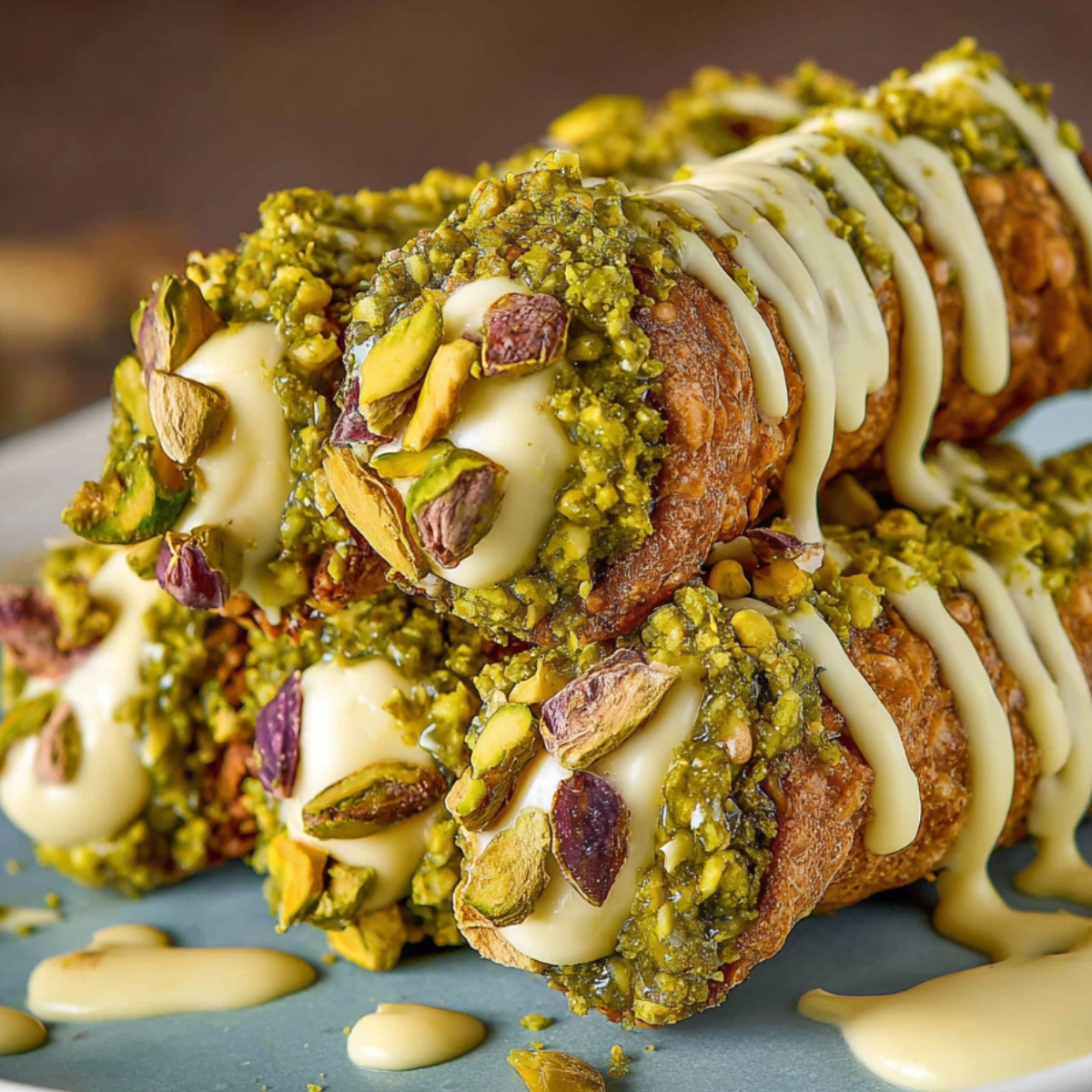
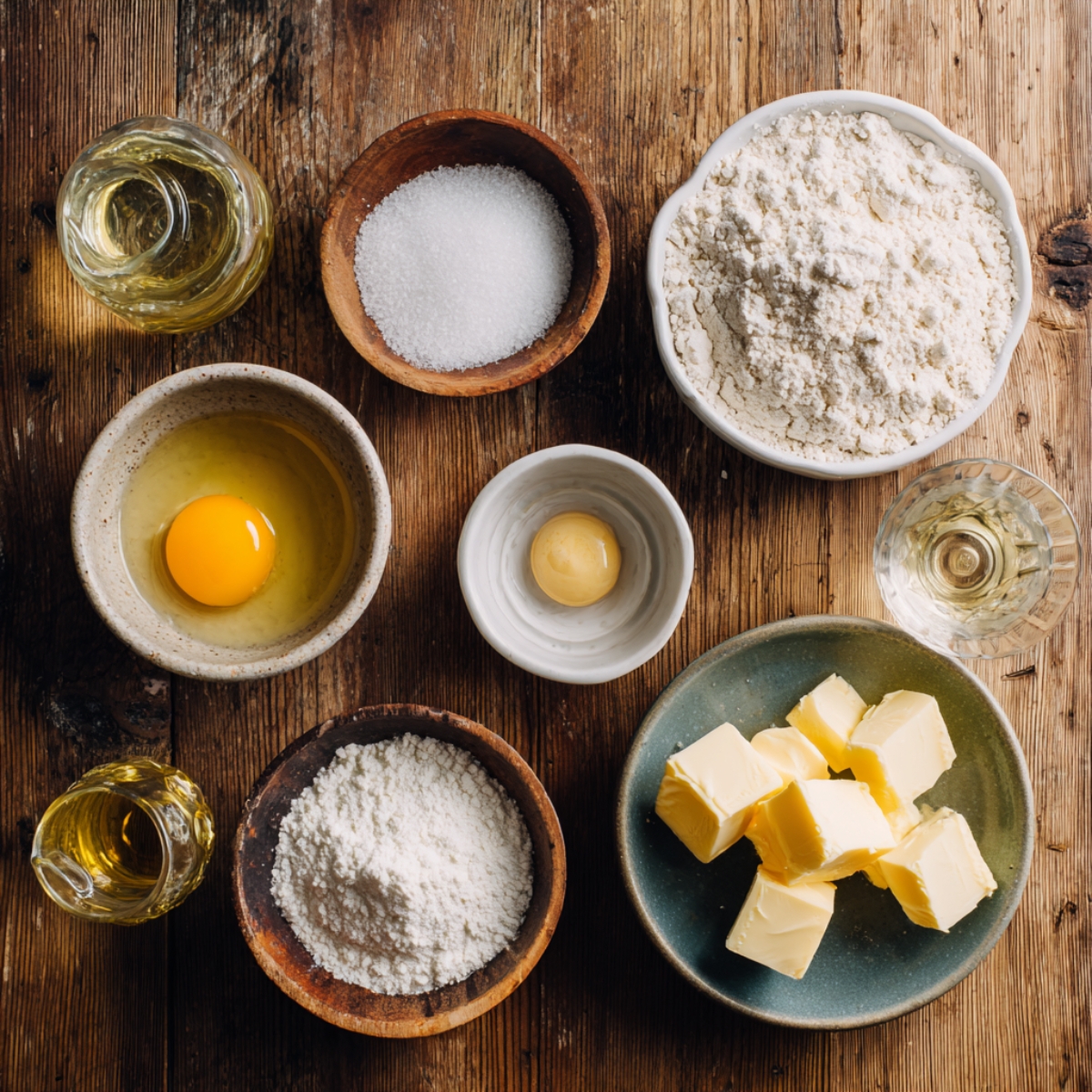
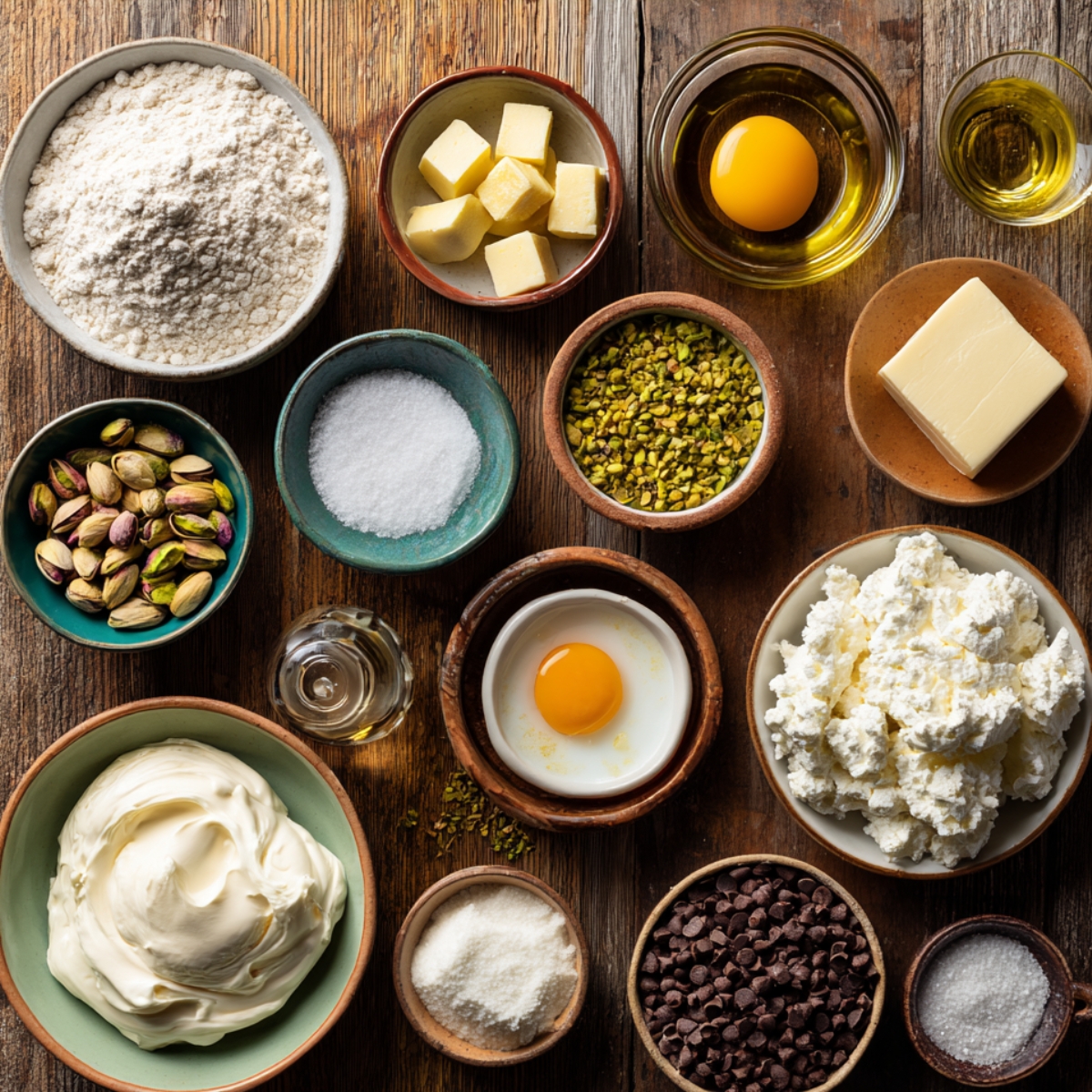
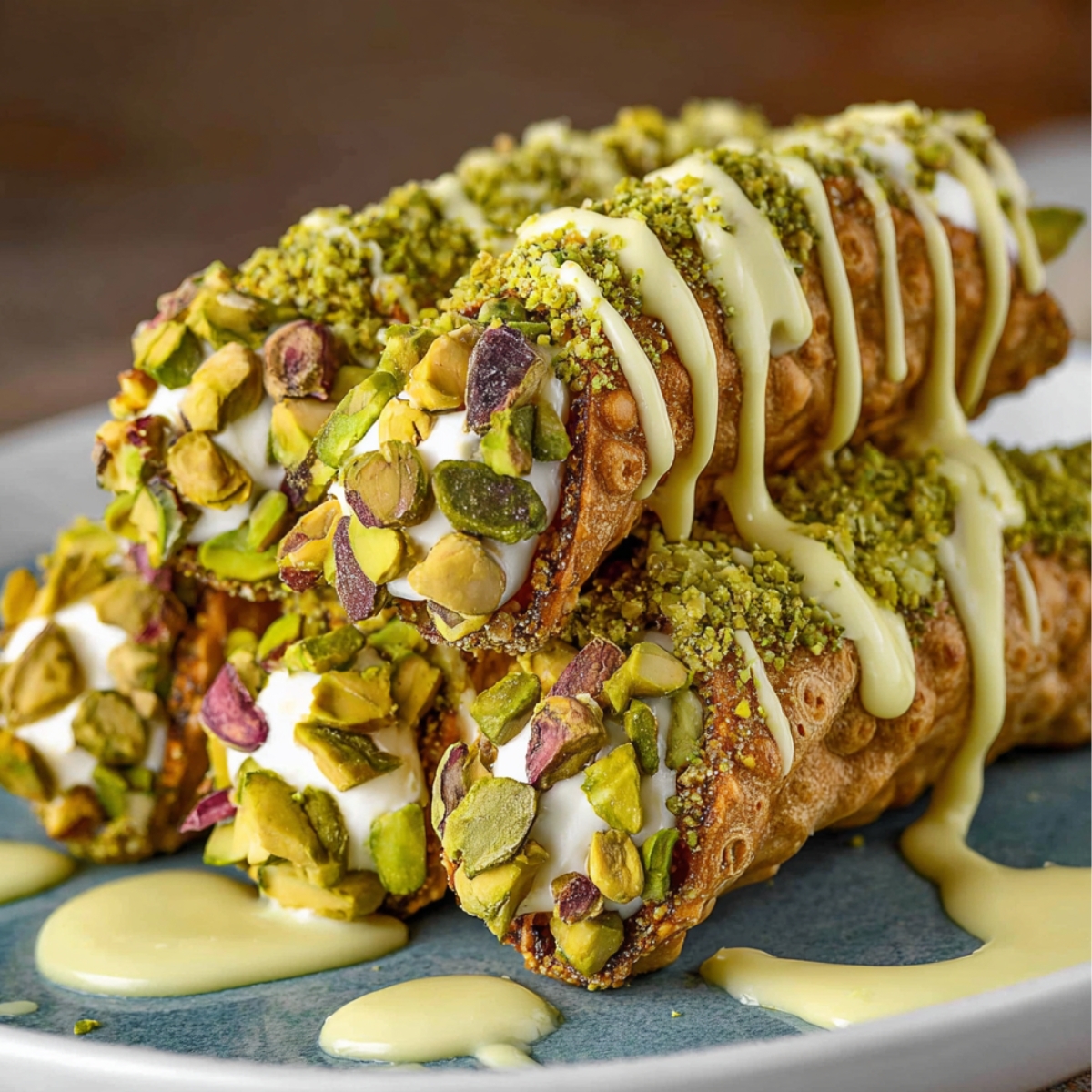


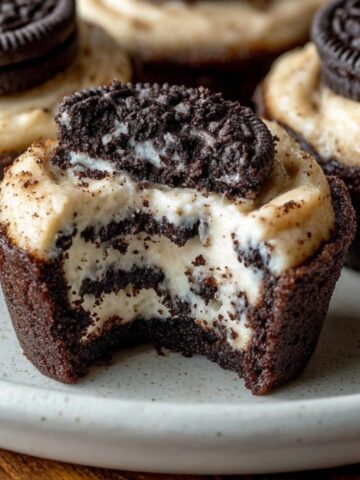
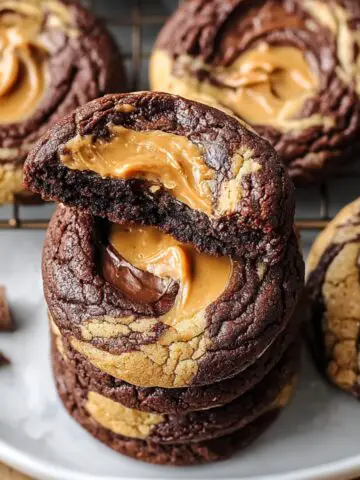
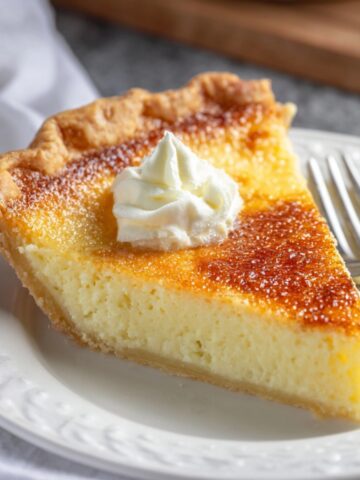

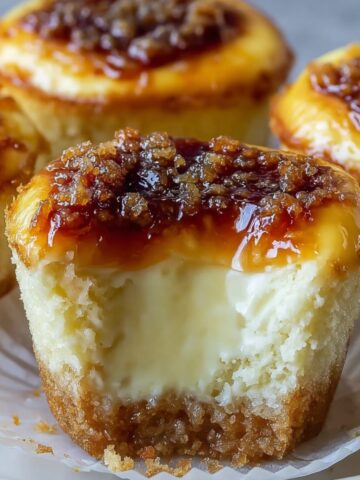
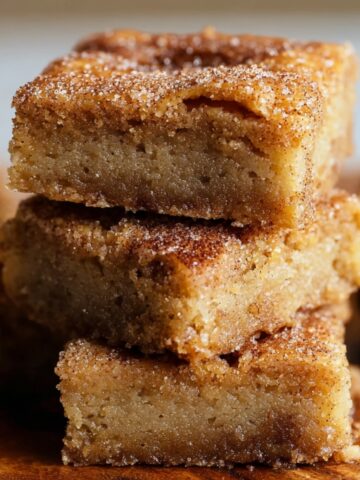
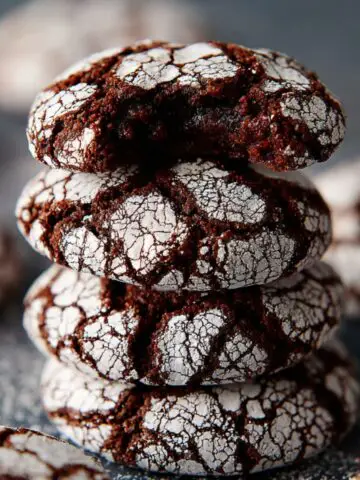



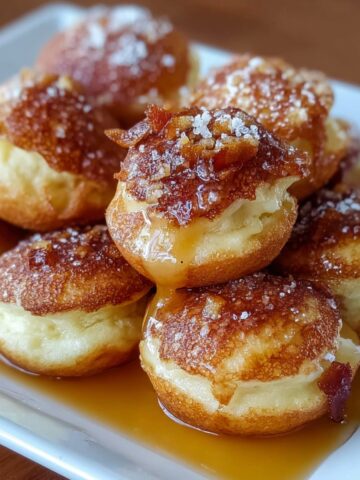
Leave a Reply